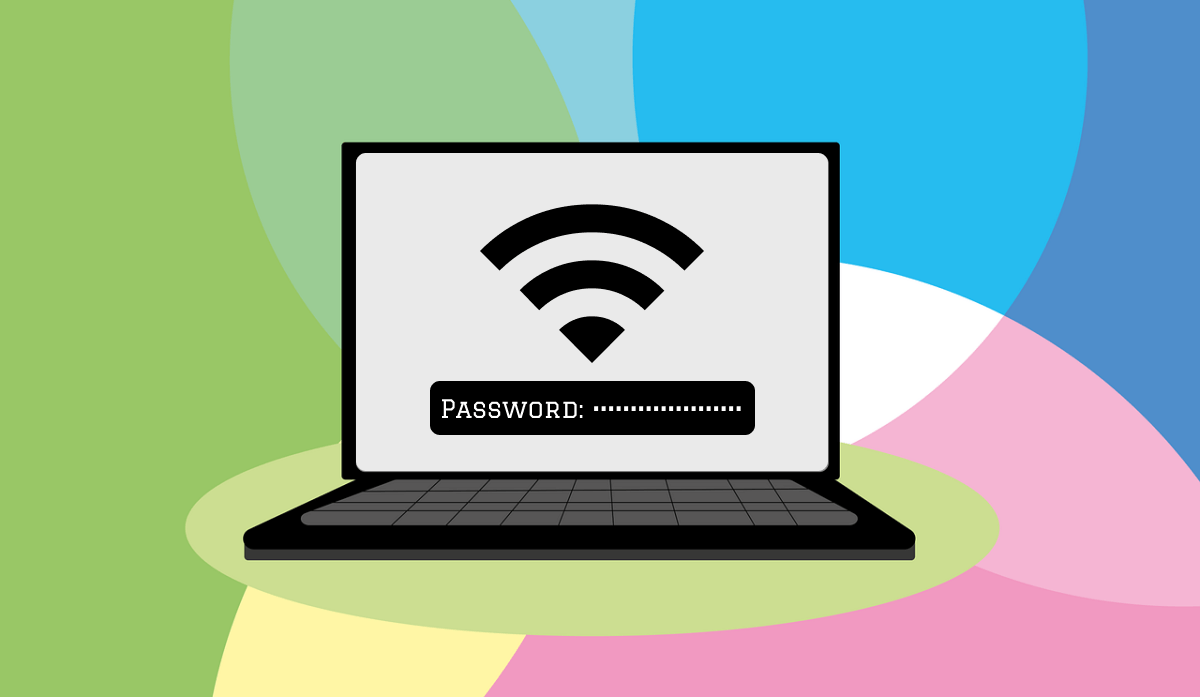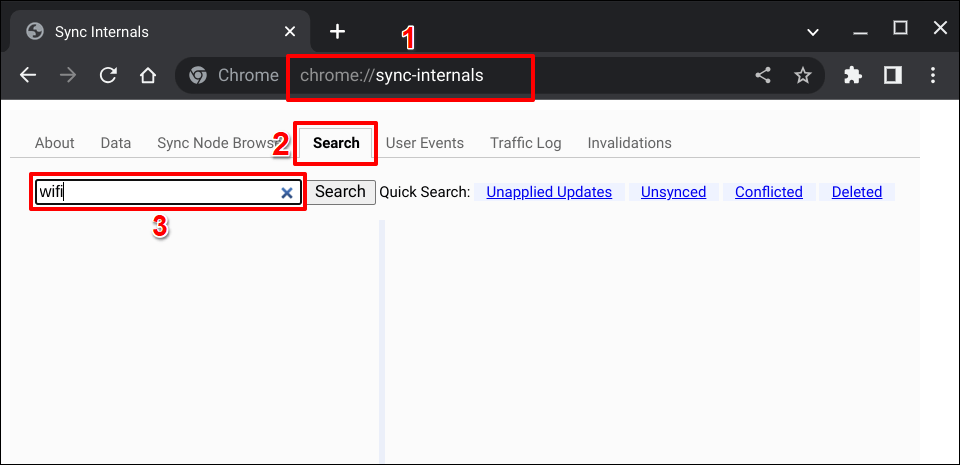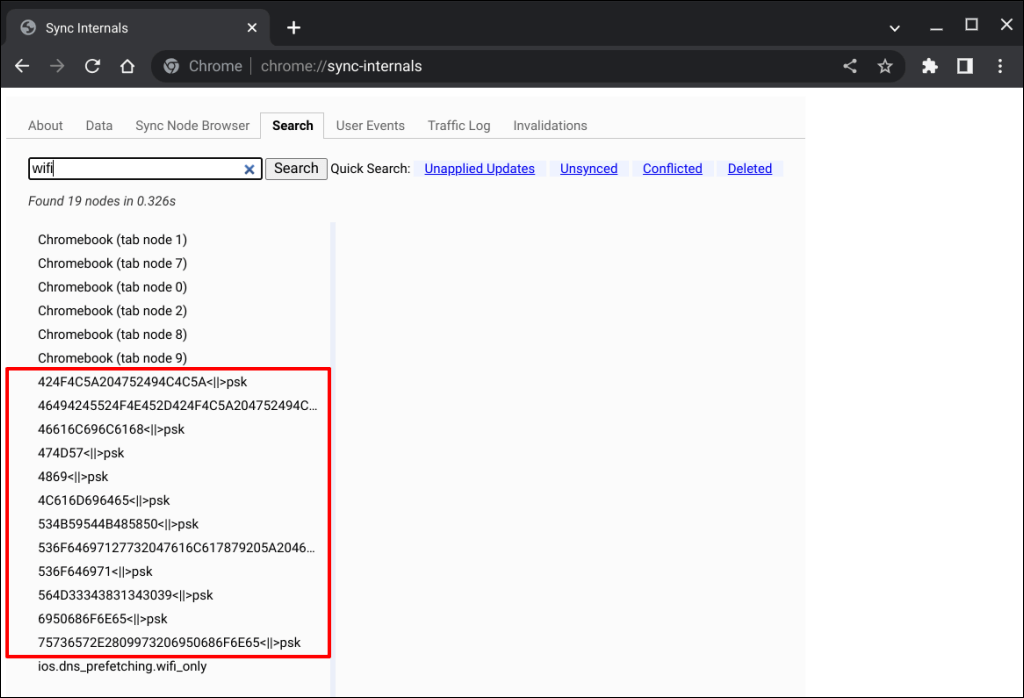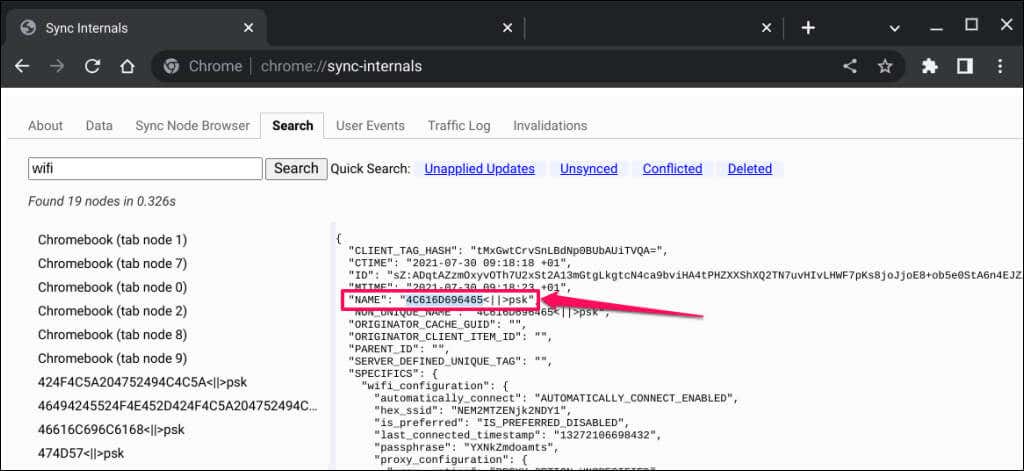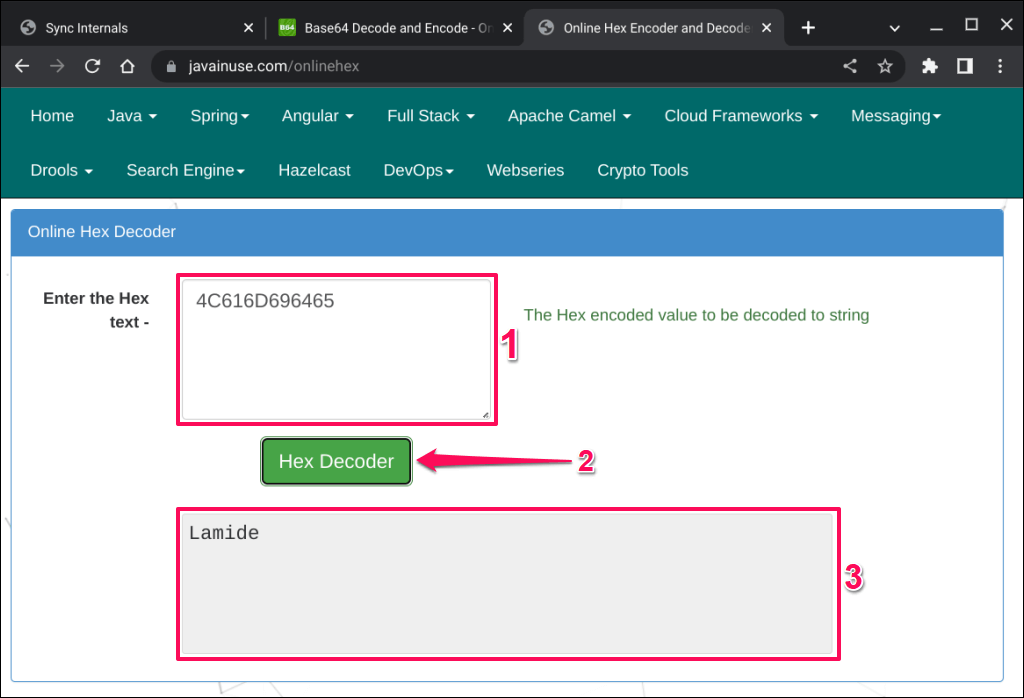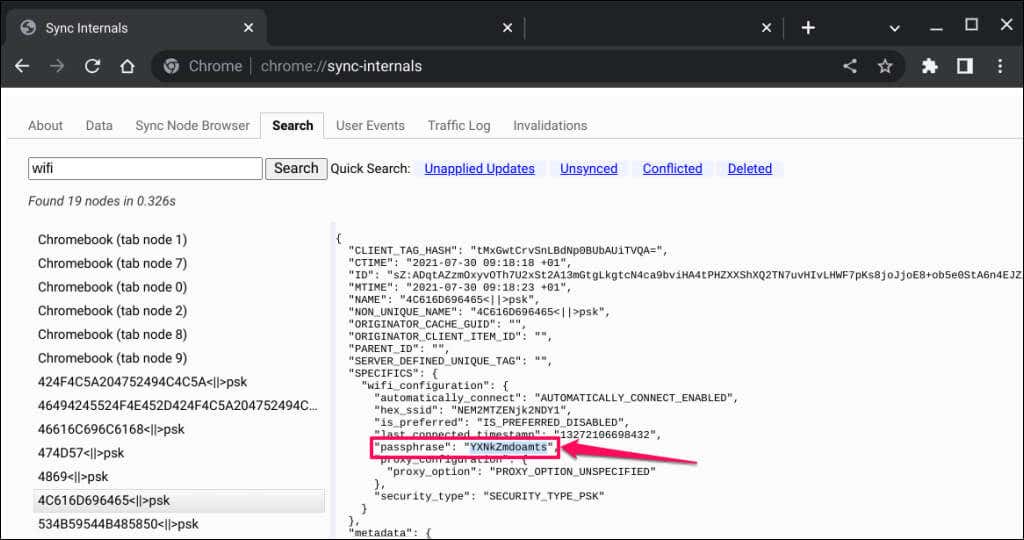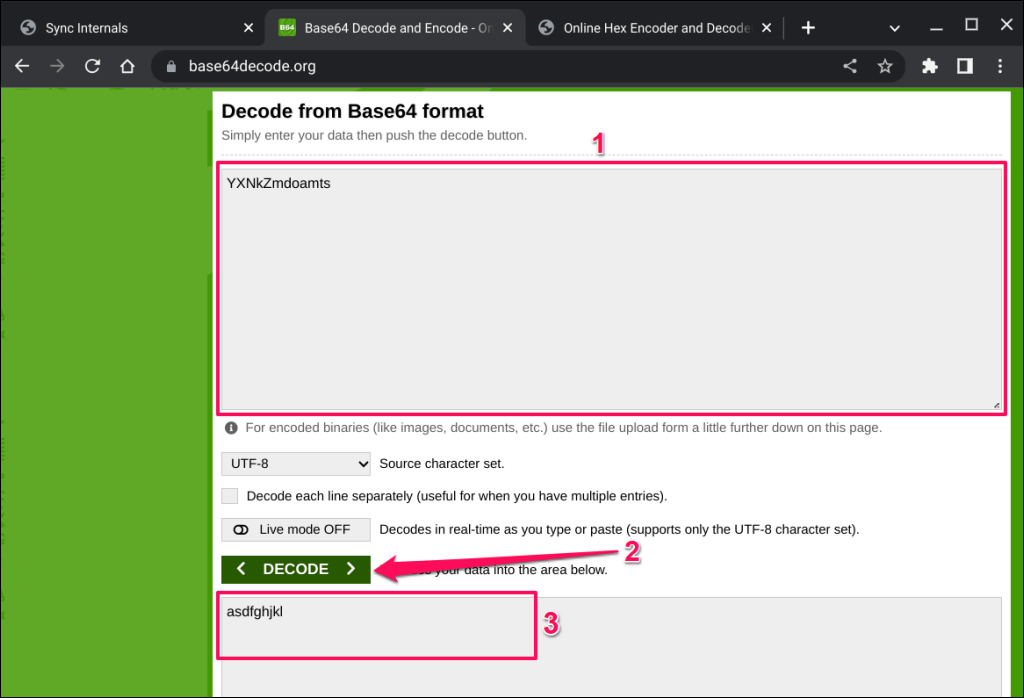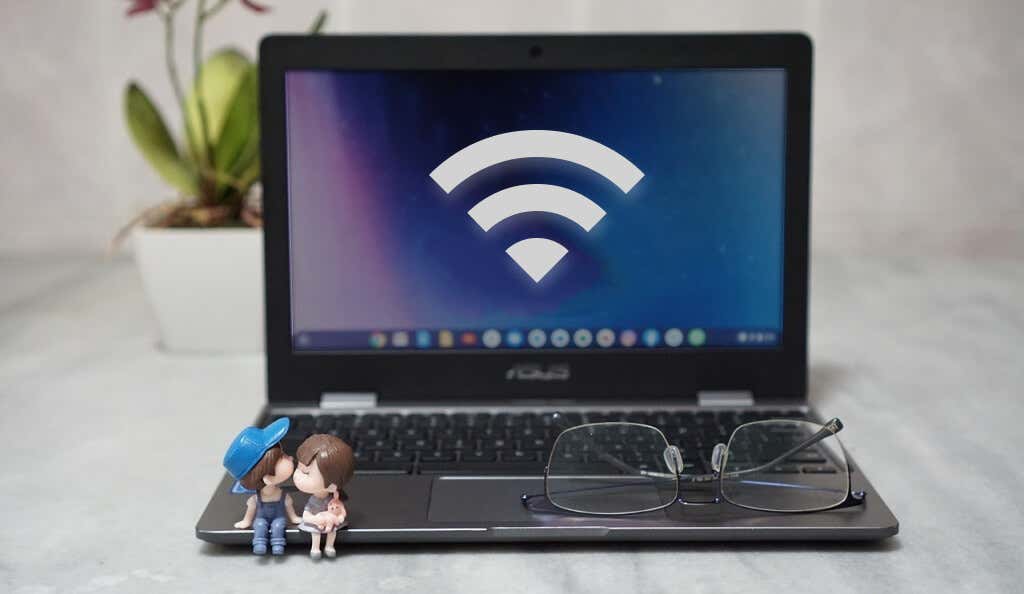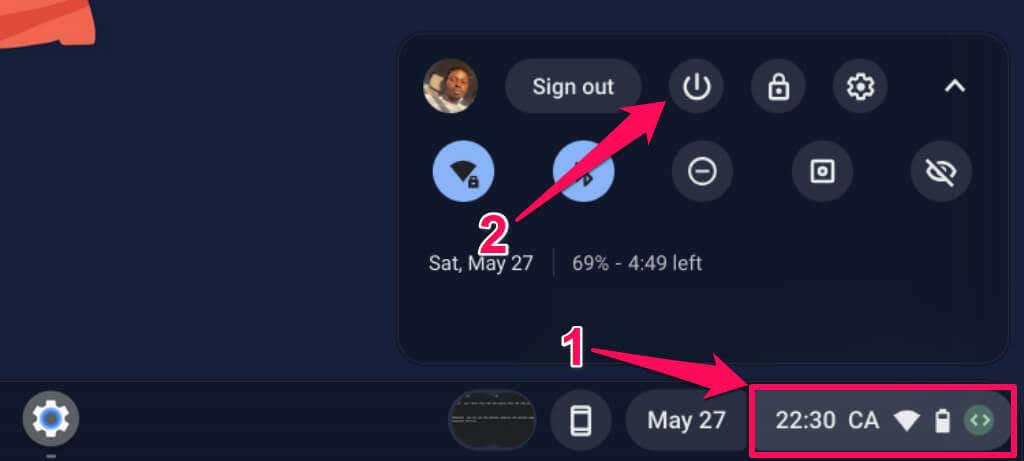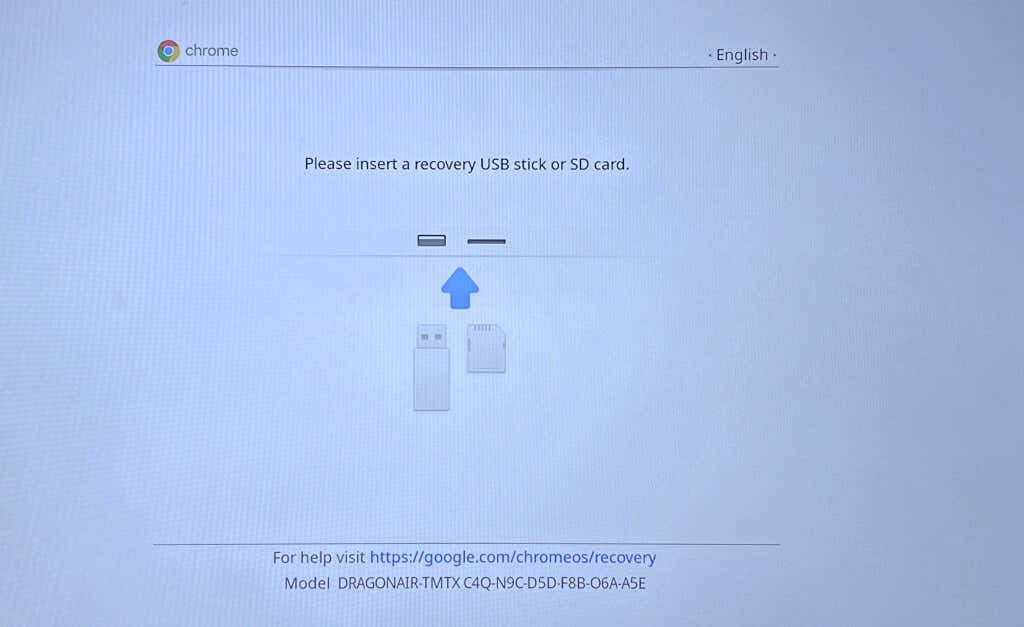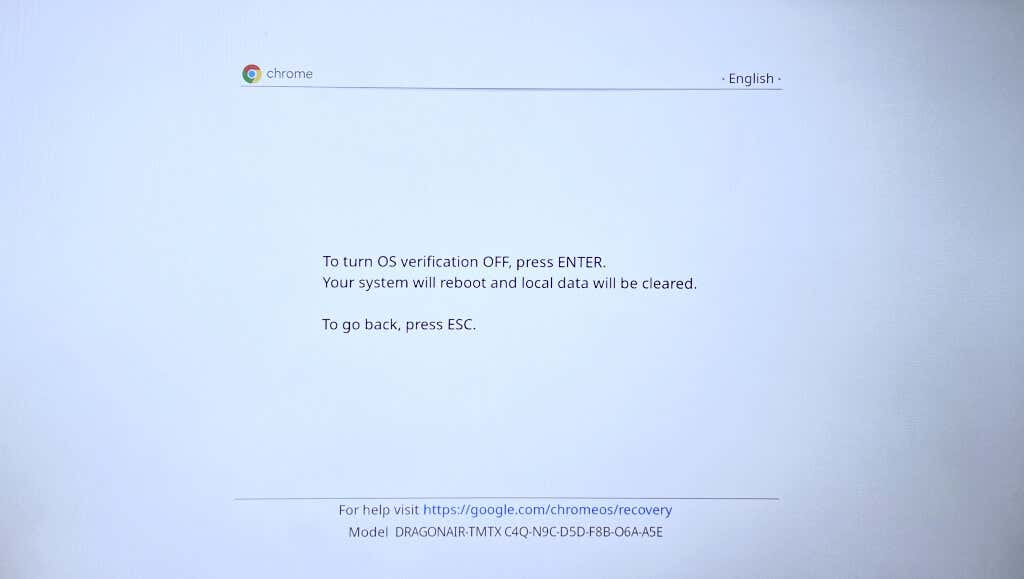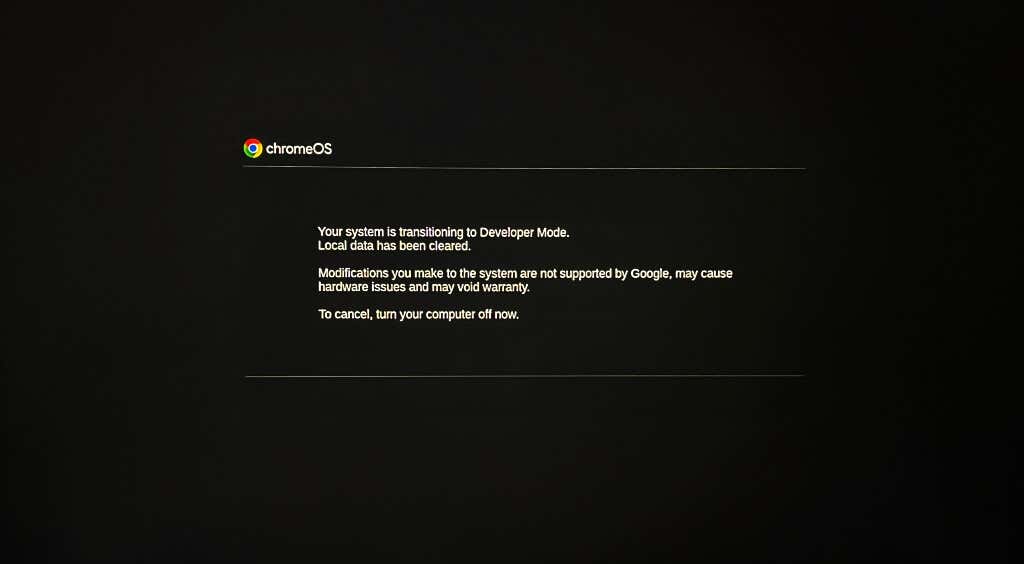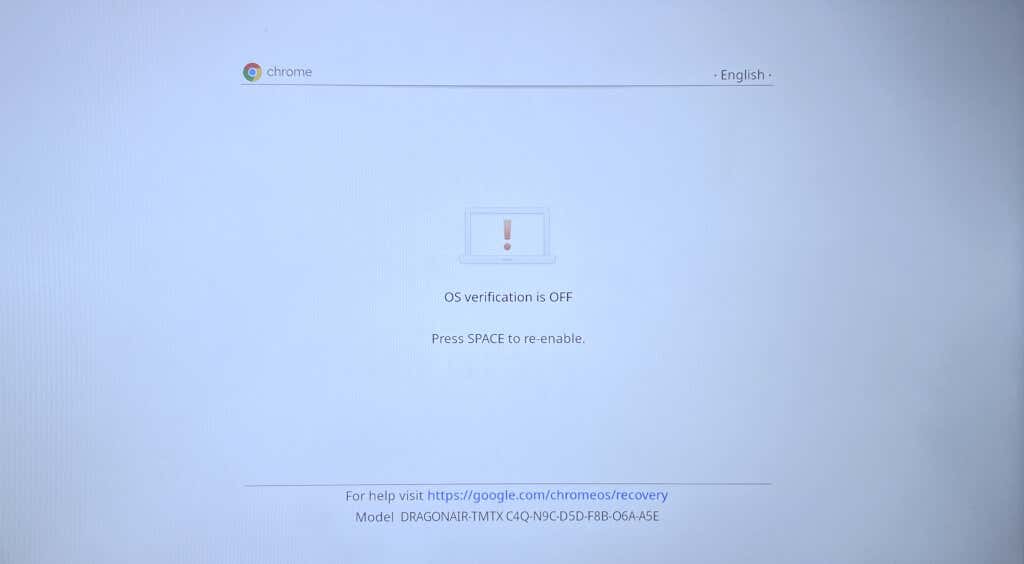Can’t remember the password of the Wi-Fi network your Chromebook is connected to? You can easily find Chromebook Wi-Fi passwords through the Google Chrome web browser.
Google Chrome encrypts and saves the details (name and password) of all Wi-Fi networks your Chromebook joins. This tutorial will show you how to find Wi-Fi passwords on your Chromebook.
Find Saved Wi-Fi Passwords via Google Chrome
Open Google Chrome on your Chromebook and follow the steps below.
- Type chrome://sync-internals in the address bar and press Enter.
- Open the Search tab, type wifi in the search box, and press Enter on your keyboard.
Results/nodes with “<ll>psk” at the end are the saved Wi-Fi networks on your Chromebooks. The alphanumeric characters before the “<ll>psk” are the encrypted Wi-Fi network name or SSID (service set identifier).
Use online hex decoder tools like Base64 or JavaInUse to decrypt the network name/SSID.
- Select an entry on the sidebar and copy the encrypted network name in the “NAME” row.
- Paste copied text in the hex decoder tool to decrypt/see the network name/SSID. The next step is to decrypt the network passcode or password.
- Return to the Wi-Fi network’s page on Chrome’s “Sync internals” menu and copy the text in the “passphrase” row.
- Paste the copied text in the online hex decoder tool to see the Wi-Fi network’s password.
Check Chromebook Wi-Fi Password in Developer Mode
An alternate method of checking Wi-Fi passwords in Chrome OS requires enabling Developer Mode and running multiple commands in the Chrome Shell terminal.
Although this method worked for some Chromebook users, some commands wouldn’t run on our test device. We suspect that finding Wi-Fi passwords in Developer Mode works on Chromebooks running specific/older Chrome OS versions. You could try the method and check if it works on your Chromebook.
Note: Enabling Developer Mode will powerwash (read: factory reset) your Chromebook—that’ll uninstall all apps and delete local data. We recommend backing up important files to Google Drive or an external storage device before enabling Developer Mode. Also, activating Developer Mode may cause hardware malfunctions/issues and void your Chromebook’s warranty.
Connect your Chromebook to a power source or ensure it holds at least 50% battery charge before you proceed. Follow the steps below to boot your Chromebook into Developer Mode.
- Select the time in the bottom-right corner of the screen to open your Chromebook’s system tray. You can also use the Alt + Shift + N keyboard shortcut to open the system tray.
- Select the Power icon to shut down your Chromebook. Wait 10-15 seconds for your Chromebook to shut down before proceeding to the next step.
- Press and hold the Esc + Refresh + Power buttons simultaneously.
- Release all three buttons when your Chromebook displays a recovery screen with the “Please insert a recovery USB stick or SD card” message.
- Press Ctrl + D to enable Developer Mode.
- Afterward, press Enter to turn off OS verification.
Disabling OS verification activates Developer Mode, allowing your Chromebook to boot non-Google operating systems. Wait while your Chromebook transitions into Developer Mode—the operation takes 5-10 minutes.
- Press Ctrl + D on the “OS verification is OFF” screen to boot your Chromebook.
Alternatively, wait 10-20 seconds, and your Chromebook will automatically boot into Developer Mode after making a loud beep.
Now that your Chromebook is in Developer Mode, proceed to the next step to find passwords to previously connected Wi-Fi networks.
- Press Ctrl + Alt + T to launch the Chrome Shell command-line interface/terminal.
- Type or paste shell in the terminal and press Enter.
- Afterward, type/paste sudo su in the following line and press Enter.
- Type cd home/root and press Enter.
- Type ls, press Enter, and copy the code string in the next line.
- Next, type or paste more shill/shill.profile and press Enter.
You should see information about Wi-Fi networks saved on your Chromebook.
- Locate a Wi-Fi network and copy the characters after the colon on the “Passphrase=rot47:” row.
The characters are the encrypted password for the Wi-Fi network. Run the command in the next step to decrypt the network password.
- Type echo copied-text | tr ‘!-~’ ‘P-~!-O’ and press Enter. Replace copied-text with the encrypted password/characters you copied in step #14.
You should see the password to the Wi-Fi network on the next line.
Find Wi-Fi Passwords on Other Devices
Try using Android Wi-Fi password reveal apps if you can’t check Wi-Fi passwords via Google Chrome or Developer Mode. Finding Wi-Fi passwords in Windows and macOS is more straightforward. If your Windows or Mac computers use the same Wi-Fi network(s) as your Chromebook, check the network’s password on your other device(s) instead.
